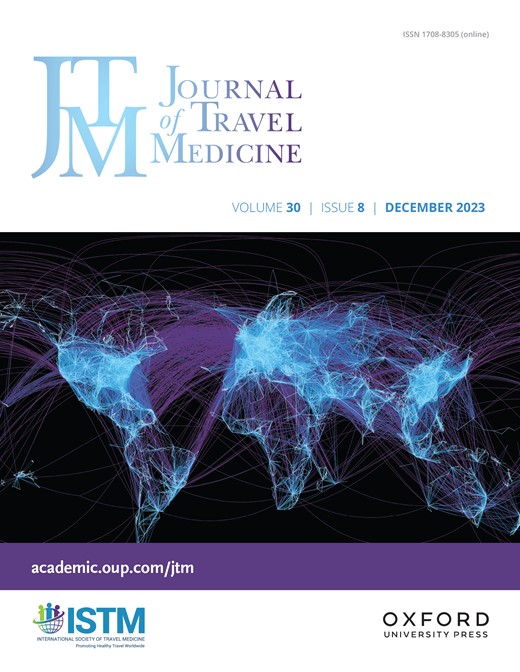从实验室到临床:开发基孔肯雅减毒活疫苗 VLA1553/IXCHIQ
IF 6.4
2区 医学
Q1 INFECTIOUS DISEASES
引用次数: 0
摘要
背景 在过去 20 年里,110 多个国家报告了 500 多万例基孔肯雅病病例,这是一种由蚊子传播的病毒性疾病。直到最近,基孔肯雅病的预防策略仍主要依靠病媒控制和个人避免蚊虫叮咬,效果不佳。方法 本综述概述了导致基孔肯雅病减毒活疫苗 VLA1553 (IXCHIQ®) 获得批准的临床前和临床有效性与安全性数据。报告还介绍了基于免疫学保护替代物的 VLA1553 创新开发途径,并讨论了正在进行的和未来的许可后研究。结果 在小鼠和非人灵长类动物模型中,VLA1553 可激发高滴度的中和抗体,对野生型基孔肯雅病毒挑战具有保护作用,并且不存在安全性问题。VLA1553 的 1 期临床试验表明,120 名健康参与者的血清转换率达到 100%,12 个月后中和抗体滴度仍能保持稳定。这些结果和替代保护标志物的确定促使 VLA1553 直接进入 3 期临床开发,这也是与美国食品药品管理局 (FDA) 和欧洲药品管理局达成的协议。关键的 3 期临床试验达到了主要的免疫原性终点,在接种疫苗后 28 天,根据免疫桥接,基线血清阴性参与者达到了血清保护水平。这些研究结果有助于向美国食品药品管理局提交生物制品许可申请,加速批准 VLA1553 在美国用于年龄≥18 岁的成人。正在进行和计划进行的研究将确认 VLA1553 在成人和年轻人中的临床疗效/有效性和安全性,并将在基孔肯雅病流行国家获得数据,这些国家的需求尚未得到最大程度的满足。结论 VLA1553 是基于血清学替代保护标志物加速开发后批准用于预防成人基孔肯雅病的首个疫苗。VLA1553 为减少基孔肯雅病在流行人群和旅行者中的传播和负担的战略增添了新的内容。本文章由计算机程序翻译,如有差异,请以英文原文为准。
From bench to clinic: the development of VLA1553/IXCHIQ, a live-attenuated chikungunya vaccine
Background Over the past 20 years, over 5 million cases of chikungunya, a mosquito-transmitted viral disease, have been reported in over 110 countries. Until recently, preventative strategies for chikungunya were largely ineffective, relying on vector control and individual avoidance of mosquito bites. Methods This review outlines the preclinical and clinical efficacy and safety data that led to the approval of VLA1553 (IXCHIQ®), a live-attenuated vaccine against chikungunya disease. It also describes the innovative development pathway of VLA1553, based on an immunological surrogate of protection, and discusses ongoing and future post-licensure studies. Results In mice and non-human primate models, VLA1553 elicited high titres of neutralizing antibodies, conferred protection against wild-type chikungunya virus challenge and raised no safety concerns. A Phase 1 clinical trial of VLA1553 demonstrated 100% seroconversion among 120 healthy participants, with sustained neutralizing antibody titres after 12 months. These results and determination of a surrogate marker of protection led to advancement of VLA1553 directly into Phase 3 clinical development, as agreed with the US Food and Drug Administration (FDA) and the European Medicines Agency. The pivotal Phase 3 trial met its primary immunogenicity endpoint, achieving seroprotective levels based on immuno-bridging in baseline seronegative participants 28 days post-vaccination. These findings enabled submission of a Biologics License Application to the FDA for accelerated approval of VLA1553 in the US for adults aged ≥18 years. Ongoing and planned studies will confirm the clinical efficacy/effectiveness and safety of VLA1553 in adults and younger individuals, and will generate data in chikungunya endemic countries that have the highest unmet need. Conclusion VLA1553 is the first vaccine approved for the prevention of chikungunya disease in adults, following accelerated development based on a serological surrogate marker of protection. VLA1553 adds to strategies to reduce the spread and burden of chikungunya in endemic populations and travellers.
求助全文
通过发布文献求助,成功后即可免费获取论文全文。
去求助
来源期刊

Journal of travel medicine
医学-医学:内科
CiteScore
20.90
自引率
5.10%
发文量
143
审稿时长
6-12 weeks
期刊介绍:
The Journal of Travel Medicine is a publication that focuses on travel medicine and its intersection with other disciplines. It publishes cutting-edge research, consensus papers, policy papers, and expert reviews. The journal is affiliated with the Asia Pacific Travel Health Society.
The journal's main areas of interest include the prevention and management of travel-associated infections, non-communicable diseases, vaccines, malaria prevention and treatment, multi-drug resistant pathogens, and surveillance on all individuals crossing international borders.
The Journal of Travel Medicine is indexed in multiple major indexing services, including Adis International Ltd., CABI, EBSCOhost, Elsevier BV, Gale, Journal Watch Infectious Diseases (Online), MetaPress, National Library of Medicine, OCLC, Ovid, ProQuest, Thomson Reuters, and the U.S. National Library of Medicine.
 求助内容:
求助内容: 应助结果提醒方式:
应助结果提醒方式:


